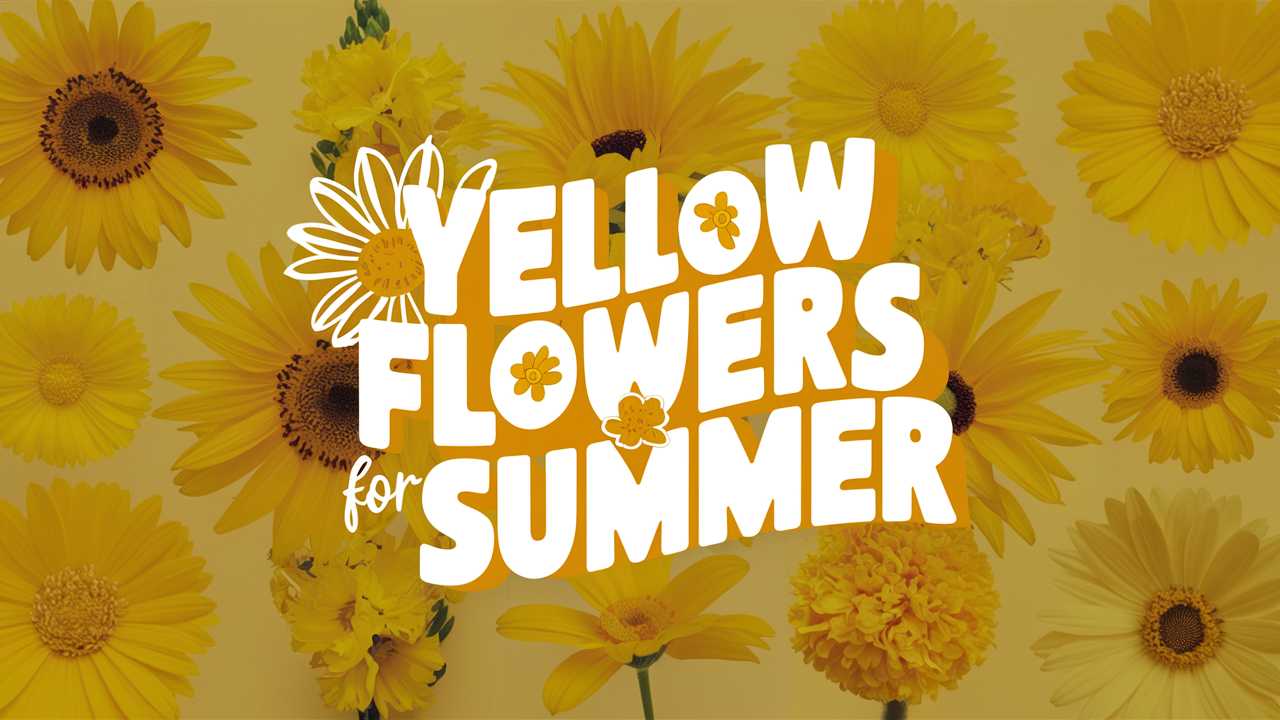In this blog post, we’ll explore an array of stunning yellow flowers that capture the essence of summer, highlighting their unique features, care requirements, and ideal gardening uses.
Sunflower
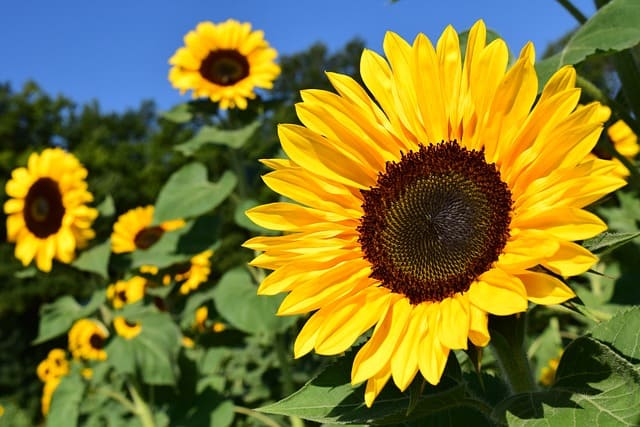
The sunflower (Helianthus annuus) is perhaps the most iconic yellow flower, symbolizing warmth and positivity. Known for its large, bright yellow petals and dark central disk, sunflowers are easily recognizable and widely loved. They thrive in sunny locations, making them a perfect fit for summer gardens.
Sunflowers are not just beautiful; they are also highly resilient. They can grow in diverse soil types, although they prefer well-drained soil with plenty of sunlight. Their growth habit is remarkable, often reaching heights that range from a few feet to over ten feet, depending on the variety. For those determined to grow sunflowers, it’s rewarding to watch them turn to follow the sun’s path throughout the day.
In addition to being visually appealing, sunflowers are beneficial for pollinators, attracting bees and butterflies. They can also be a source of food; their seeds are consumed by humans and birds alike. With a bit of care, sunflowers can transform a garden into a cheerful summer spectacle.
Black-Eyed Susan
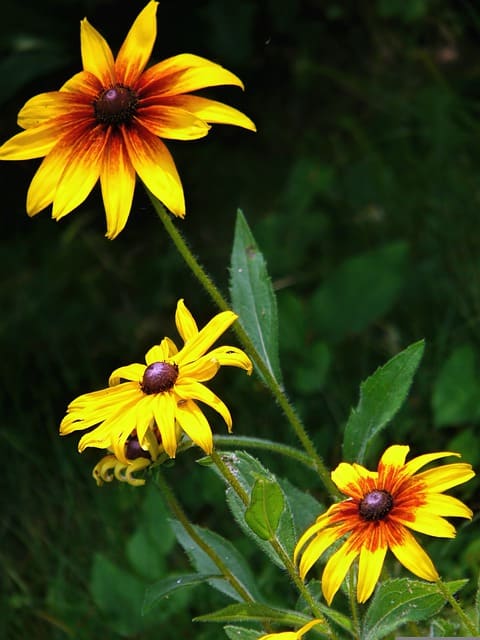
The Black-eyed Susan (Rudbeckia hirta) blooms with bright yellow petals and a distinct dark brown center, creating a striking contrast that draws the eye. This perennial flower is native to North America and is known for its hardiness and vibrant appearance in fields and gardens alike.
Black-eyed Susans thrive in full sun but can tolerate partial shade, making them versatile for various planting conditions. They prefer well-drained soil and usually grow in clumps, providing a sea of yellow in the summer landscape. These flowers are low-maintenance, requiring minimal care beyond occasional deadheading to encourage new blooms.
One of the notable features of Black-eyed Susans is their ability to attract a range of pollinators. Bees, butterflies, and even hummingbirds are commonly seen fluttering around these cheerful blossoms. They are also a great choice for naturalizing a garden, imbuing it with a wildflower charm while supporting local biodiversity.
Coreopsis
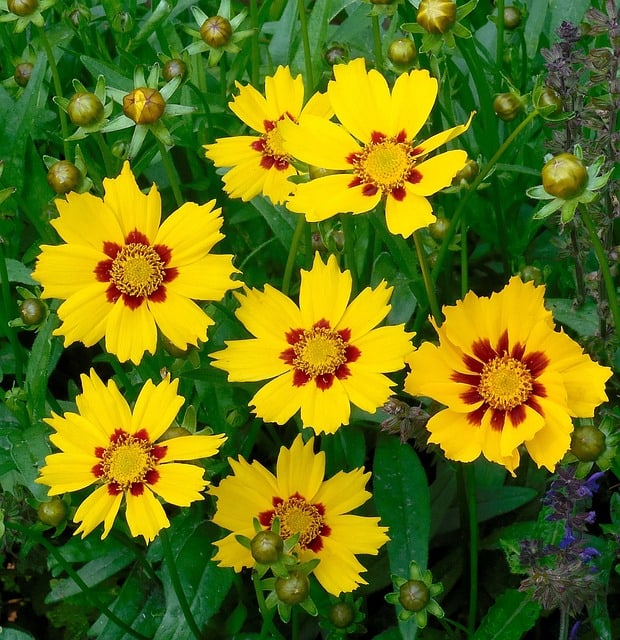
Coreopsis, commonly known as tickseed, showcases an array of yellow flowers with vibrant, daisy-like appearances. With over 80 species, coreopsis offers a delightful variety of shapes and sizes for gardeners to explore. Some species have deeper yellow hues, while others are adorned with red or pink accents, providing a rich palette for garden design.
Coreopsis thrives in full sun and can adapt to a wide range of soil types, although they prefer sandy, well-drained soils. These plants are drought-tolerant once established, making them perfect for low-maintenance gardens. With their long blooming period, often from late spring to the first frost, coreopsis can provide continuous color throughout the summer.
Their resilience also makes coreopsis an excellent option for attracting butterflies and other pollinators. They perform well in borders, along pathways, or as part of a wildflower garden, infusing your space with not just yellow blooms, but also the enchanting movement of visiting insects.
Yellow Marigold

Marigolds (Tagetes spp.) are a staple in many summer gardens, particularly the yellow varieties. Their ruffled petals bring joy and warmth, while their rich green foliage provides a beautiful backdrop. These hardy annuals are known for their bright colors, including vibrant yellows and golden oranges.
Marigolds thrive in sunny locations and prefer well-drained, fertile soil. They are low-maintenance, making them ideal for novice gardeners. Regular deadheading will encourage further blooms and extend their flowering season, which typically lasts from late spring until frost.
Beyond their aesthetic value, yellow marigolds are also renowned for their pest-repelling properties. The strong scent of marigolds can deter nematodes and various aphids, making them beneficial companions in vegetable gardens. They are perfect for creating a vibrant border or filling in garden beds with an explosion of golden color.
Goldenrod
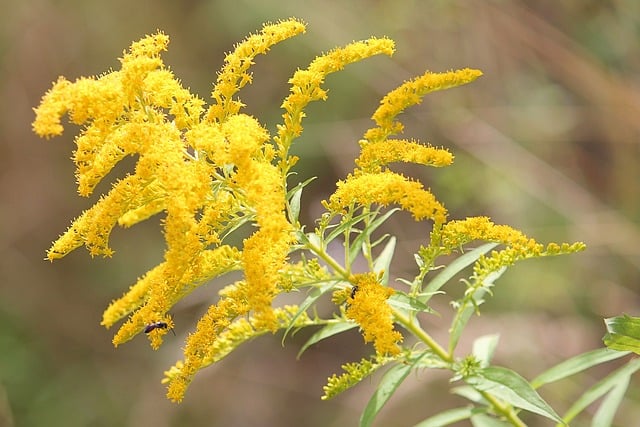
Goldenrod (Solidago spp.) might not be the first flower that comes to mind when you think of summer blooms, but its rich yellow spikes of flowers become particularly prominent during late summer into autumn. Goldenrod is often mistaken for causing hay fever, but it is actually a vital nectar source for various pollinators during a time when many other flowers are fading.
Goldenrod is adaptable to various soil conditions and is drought-resistant, making it a reliable choice for sunny gardens. This perennial thrives in full sun and attracts a plethora of pollinators, including bees, butterflies, and even beneficial insects like wasps. Additionally, goldenrod can grow in challenging sites, such as roadside areas, making it a resilient option.
With their lovely plumes, goldenrods can create vertical interest in garden design. Consider combining them with grasses or other perennials to enhance the summer landscape with rich textures and colors.
Yellow Yarrow
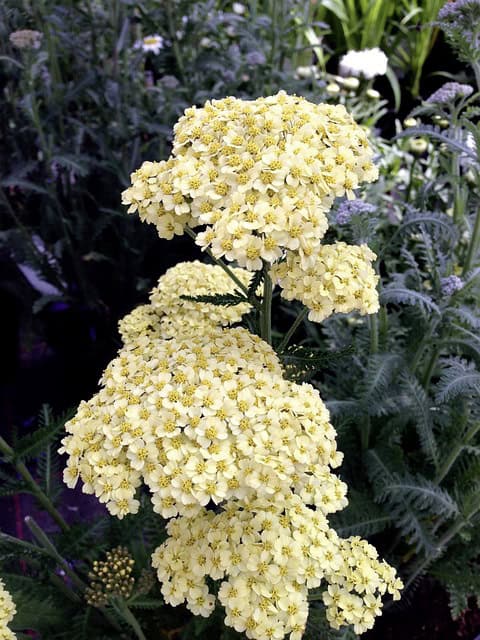
Yarrow (Achillea millefolium) is a versatile and hardy perennial that presents clusters of tiny yellow flowers in a flat-topped formation. This sturdy plant not only offers visual beauty but has also been valued for its medicinal properties for centuries.
Yarrow thrives in well-drained soil and full sun, flourishing even in rocky or sandy conditions. Its drought resistance makes it an excellent choice for low-water landscaping. With a long flowering season from late spring through summer, yarrow will provide golden blooms for a considerable time, attracting butterflies and beneficial insects.
Yarrow works wonderfully as a border plant or in wildflower gardens, providing both color and texture. Its feathery foliage complements other blooms and can also be dried for arrangements, allowing you to bring a piece of summer indoors.
Yellow Daylily
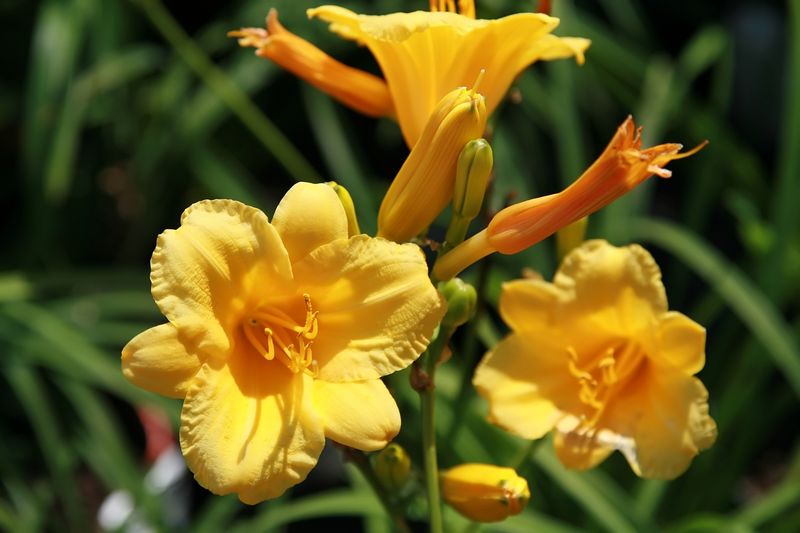
Daylilies (Hemerocallis spp.) are cherished for their striking blooms, which come in various colors, including vibrant yellows. Named for their stunning flowers that last only a day, these perennials put on an unforgettable show, often with numerous blooms over the summer months.
Daylilies are adaptable to different garden conditions, thriving in both full sun and partial shade. They are tough, drought-tolerant, and can grow in various soil types. A significant benefit of daylilies is their relatively carefree nature; they require little attention aside from basic watering and occasional division.
These resilient flowers are perfect for borders, mass plantings, or mixed perennial gardens, allowing gardeners to create a dynamic landscape alive with yellow hues. Their blooms can also enhance cut flower arrangements, making them just as beautiful indoors as they are in the garden.
Calendula
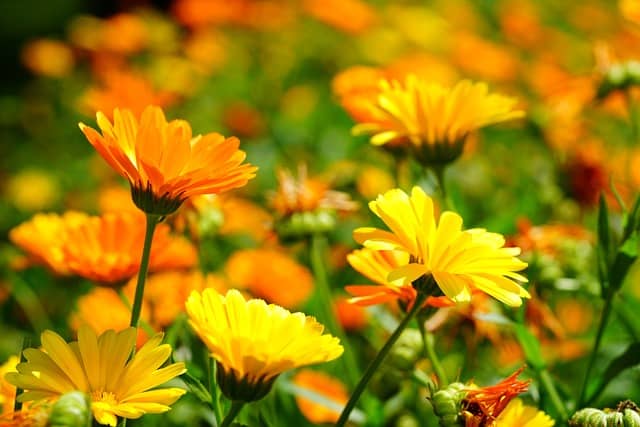
The calendula, or pot marigold (Calendula officinalis), is another delightful yellow bloom that adds charm to the summer garden. Sporting vibrant, daisy-like flowers, calendula is often used both as a decorative plant and for culinary or medicinal purposes.
Calendula thrives in full sun and prefers well-drained, fertile soil but is fairly tolerant of less-than-perfect conditions. This annual is known for its ability to flower profusely from early summer to frost, providing a continuous splash of cheerful color.
In addition to their decorative role, calendula petals are edible and often used to brighten salads, soups, and baked goods. Their soothing properties are also harnessed in skin care products, with calendula-infused oils and ointments popular for their calming effects. With their versatility and beauty, calendulas make a wonderful and useful addition to any garden.
Evening Primrose
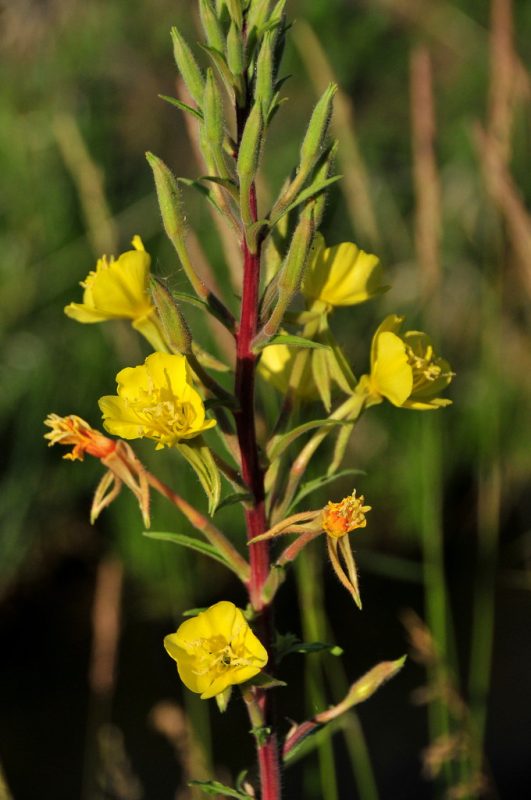
Evening primrose (Oenothera biennis) includes enchanting yellow flowers that typically bloom in the evening and emit a sweet fragrance, attracting nighttime pollinators like moths. This charming biennial or perennial plant offers a unique twist to summer gardens with its late-summer blooms.
Evening primrose prefers full sun and well-drained soil, displaying remarkable resilience to drought conditions once established. The flowers are known for their delicate, cup-like shape and grow on tall, slender stems, creating a beautiful silhouette against a dusk sky.
These flowers are great for naturalizing areas and pair well with other perennials and annuals that bloom earlier in the season. With their fragrant blooms and pollinator-friendly attributes, evening primrose brings magic to summer evenings, lighting up your garden as the sun sets.
Jerusalem Artichoke
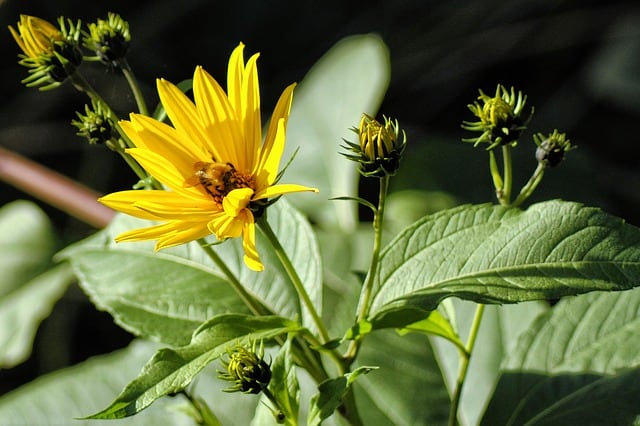
Jerusalem artichoke (Helianthus tuberosus), a member of the sunflower family, produces delightful yellow flowers resembling sunflowers’ smaller version. Known primarily for its edible tubers, this plant brings both beauty and utility to the garden.
Jerusalem artichokes thrive in full sun and can tolerate various soil types, although they prefer garden soil rich in organic matter. They are robust growers, reaching heights of up to ten feet, providing stunning summer blooms as well as a delicious harvest in the fall.
In summer, the plant’s bright yellow flowers attract a wide range of pollinators, while the tubers can be harvested and enjoyed in various culinary dishes. They can be used in salads, soups, and stir-fries, providing a unique, nutty flavor. As a perennial, Jerusalem artichokes will return each year, making them a sustainable addition to any garden.
Yellow Coneflower
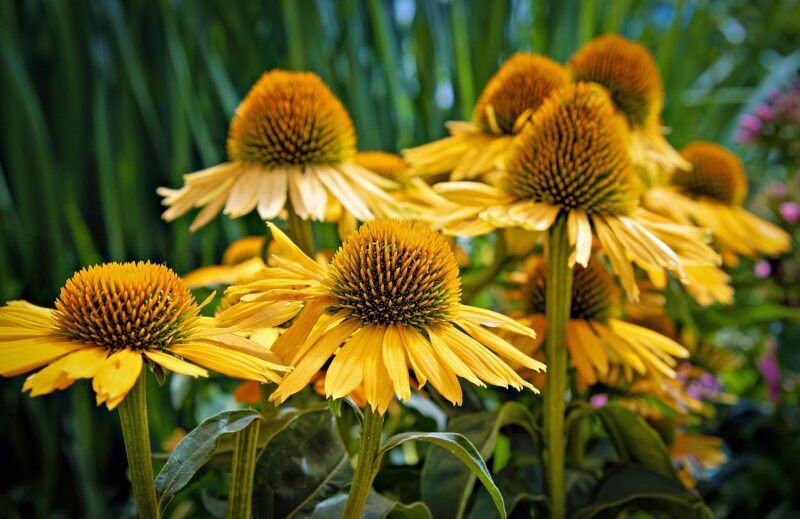
The yellow coneflower (Echinacea paradoxa) is less common than its purple cousin but offers a stunning display of yellow blooms during the summer. With its distinct cone-shaped center surrounded by vibrant petals, the yellow coneflower is a beautiful addition to gardens.
This perennial enjoys full sun and well-drained soil, demonstrating resilience in a variety of growing conditions. Known for attracting butterflies and bees, yellow coneflowers are perfect for pollinator gardens and can bloom from early summer well into autumn.
Yellow coneflowers are also drought-tolerant and very low maintenance once established. They look great in borders, wildflower gardens, or mixed plantings, enhancing the visual interest of any summer landscape with their cheerful blooms.
St. John’s Wort
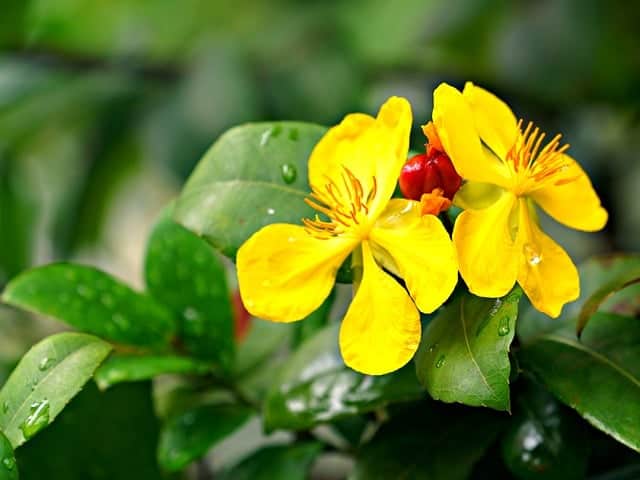
St. John’s wort (Hypericum perforatum) is a versatile yellow flowering plant known for its traditional medicinal uses. Characterized by its bright yellow blooms and unique foliage, this perennial brings beauty and benefits to summer gardens.
This hardy plant thrives in full sun and can adapt to a variety of soil types, though well-drained soil is preferred. St. John’s wort is often used in herbal remedies for its reputed antidepressant effects and can be found in numerous forms from teas to tinctures.
Beyond its medicinal use, St. John’s wort has attractive, sunny flowers that bloom from early summer into fall, providing color and texture to the garden. It works well as a foundation plant, in wildflower gardens, or even as a ground cover, easily establishing itself wherever planted.
Buttercup
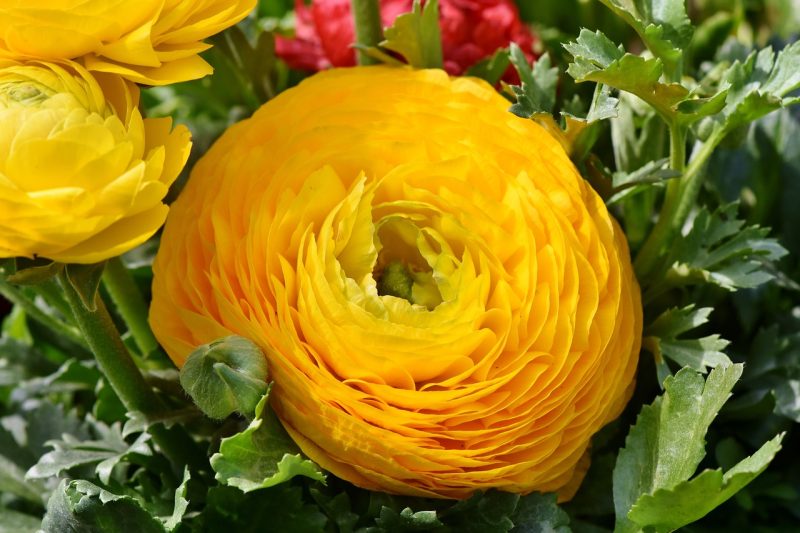
Buttercups (Ranunculus spp.) are often overlooked but present delicate yellow flowers that stand out brightly in meadows and gardens across summer months. With their glossy petals and lush green leaves, buttercups have an enchanting charm that is hard to resist.
These perennial flowers prefer moist, well-drained soils and can thrive in full sun to partial shade. Buttercups grow well in clumps, creating a beautiful blanket of golden-yellow blooms that attract various pollinators.
Although they are often considered wildflowers, buttercups can be successfully integrated into cultivated gardens for a natural look. Their cheery presence adds an air of whimsy, making them great for informal gatherings or wildflower patches.
Yellow Zinnia
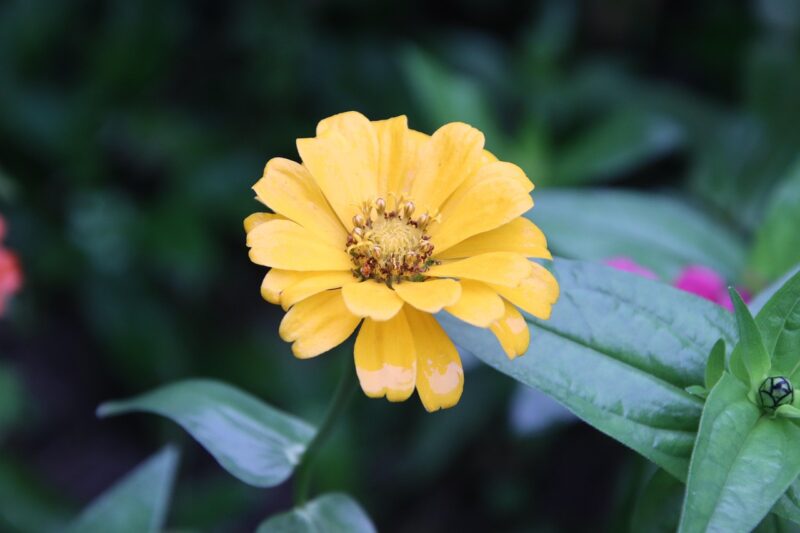
Zinnias (Zinnia elegans) are garden favorites, and the yellow varieties are particularly stunning. With their vibrant colors and daisy-like shapes, zinnias provide a dazzling display throughout the summer season.
These annuals thrive in full sun and well-drained soil, making them perfect for summer gardens. Zinnias are among the easiest flowers to grow from seed, making them a great choice for gardeners of all levels. They also produce an abundance of blooms that can last from early summer until frost, adding value to your garden.
Beyond their beauty, zinnias are also known for attracting butterflies, making them a playful addition to your summer landscape. Their bright colors can be used in cut flower arrangements, allowing you to share the sunshine with family and friends.
Yellow Canna Lily
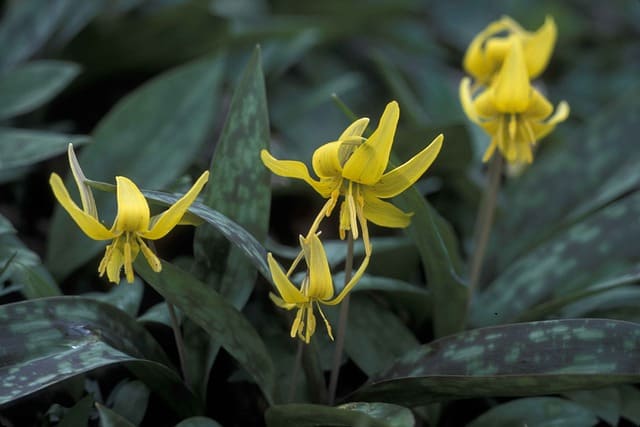
Canna lilies (Canna indica) are tropical plants that produce large, striking yellow flowers atop tall leafy stems. Known for their exotic beauty, canna lilies can provide a feeling of lushness and elegance in the summer garden.
These perennial beauties thrive in full sun to partial shade and are often grown in moist, rich soil. Cannas are typically planted as bulbs in the spring and will bloom summer through fall, creating a striking visual impact.
Beyond their vibrant flowers, canna lilies have large, lush leaves that can also add texture and brightness to your landscape. They are perfect for creating focal points or adding height to flower beds and are often used in landscaping around ponds or water features.


